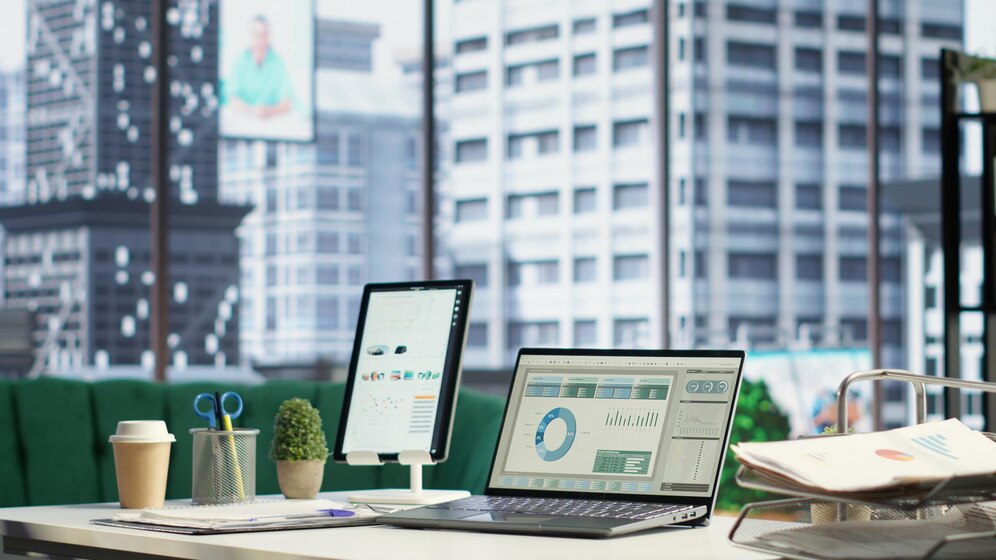The commercial property management industry is evolving rapidly, with a growing need for smart solutions that streamline operations, improve tenant relationships, and optimize real estate investments. Building a commercial property management software offers real estate businesses a chance to take advantage of cutting-edge technologies, improve efficiency, and gain a competitive edge. But where do you start, and what features should your software include? In this guide, we’ll take you through the steps to build a high-performing, scalable property management system tailored to your business.
1. Understanding the Basics of Commercial Property Management Software
Before diving into the development process, it’s essential to understand what commercial property management software (CPMS) is. In simple terms, it’s a comprehensive platform designed to help property managers and real estate owners handle their day-to-day operations. These tasks can include managing leases, rent collection, maintenance requests, tenant communications, financial reporting, and much more.
By automating these activities, CPMS can save time, reduce human errors, and increase transparency. Most importantly, it helps property managers keep track of all aspects of their business in one centralized system.
2. Why Your Business Needs Commercial Property Management Software
If you’re managing multiple properties, especially large commercial spaces, handling every aspect manually can be overwhelming. With commercial property management software, you get a host of benefits that significantly improve operational efficiency:
- Streamlined operations: From automating rent collection to scheduling maintenance, the software handles repetitive tasks.
- Enhanced tenant satisfaction: With a system in place for tenant communication and support, you can quickly resolve issues and keep tenants happy.
- Better financial management: Accurate and real-time financial reporting helps track income, expenses, and profit margins effectively.
- Compliance and data security: Many CPMS solutions offer tools to ensure compliance with regulations and keep sensitive tenant and property data secure.
3. Key Features to Include in Commercial Property Management Software
When building commercial property management software, it’s important to incorporate features that meet the needs of property managers. Here are some of the most crucial features:
a. Tenant & Lease Management
This is the heart of any property management software. Your system should allow users to manage leases, track lease terms, and store tenant information in a secure database. Automated alerts for lease expiration or rent dues can also help stay ahead of critical deadlines.
b. Rent & Payment Processing
Incorporate features that allow for online rent payment processing. This should include options for direct bank transfers, credit cards, or other online payment systems. Automated payment reminders and late fee calculations will save managers time and ensure timely collections.
c. Maintenance Management
An efficient maintenance request system should enable tenants to report issues, track progress, and get timely updates. Property managers can also assign tasks to maintenance staff, track repairs, and ensure prompt resolution of issues.
d. Accounting & Financial Reporting
For property managers, having financial transparency is critical. Your software should include tools for expense tracking, profit and loss statements, tax calculations, and real-time financial reporting. Integration with accounting software like QuickBooks or Xero can be an added advantage.
e. Tenant Communication Tools
Effective communication is key to good tenant relationships. Automated messaging, email templates, and in-app notifications should be part of your CPMS. It ensures timely updates on lease renewals, upcoming payments, or maintenance schedules.
f. Document Management
A reliable document management system is essential for storing lease agreements, financial records, and other property-related documents securely. Your software should offer easy access and a safe cloud storage solution to ensure important documents are never lost.
g. Mobile Accessibility
In today’s mobile-first world, it’s crucial that your software be mobile-friendly. Both tenants and property managers should be able to access the system on the go, whether through a mobile app or a responsive web platform.
h. Reporting & Analytics
Advanced reporting tools can help property managers make better decisions. Include features that offer customized reports for occupancy rates, rental income, maintenance expenses, and more. Predictive analytics can also be used to forecast market trends, vacancies, and tenant turnover.
i. Scalability
As the business grows, the software should be able to scale up without performance issues. Ensure that the architecture of your software is built for scalability to accommodate more properties, users, and data without causing slowdowns.
j. Integration Capabilities
To offer a more holistic solution, your software should be able to integrate with other essential tools like CRM systems, accounting software, and IoT devices (for smart buildings). This allows seamless workflow across different platforms.
4. Steps to Build Your Commercial Property Management Software
Now that you know the essential features, let’s break down the actual development process for building commercial property management software.
Step 1: Market Research & Planning
Before you start building your software, conduct thorough market research to understand your target audience’s needs. Identify competitors in the space and look for gaps or opportunities in their offerings. Create a detailed plan and feature roadmap based on this research.
Step 2: Choose the Right Technology Stack
The success of your software depends heavily on the technology stack you choose. Opt for programming languages and tools that offer scalability, security, and flexibility. Commonly used tech stacks for property management software include:
- Frontend: React, Angular, or Vue.js
- Backend: Node.js, Ruby on Rails, Python (Django)
- Database: MySQL, PostgreSQL, MongoDB
- Cloud Services: AWS, Google Cloud, Microsoft Azure
Step 3: Design the User Interface (UI)
The user interface (UI) of your software should be intuitive and easy to navigate. A clean, well-structured design will improve user experience and make it easier for property managers to adopt the system. Consider wireframing tools like Figma or Adobe XD to design your UI.
Step 4: Develop Core Features
Start by building the core features of your software, such as tenant management, payment processing, and maintenance tracking. Ensure that these features are tested thoroughly for any bugs or errors before moving on to the next phase.
Step 5: Incorporate Security Protocols
As your software will handle sensitive data like tenant records and financial transactions, security should be a top priority. Implement robust encryption, multi-factor authentication (MFA), and regular security audits to protect data from cyber threats.
Step 6: Test and Optimize
Testing is an essential step in any software development process. Conduct user testing, load testing, and security testing to ensure your software performs well under all conditions. Continuous optimization is necessary to fix bugs, improve performance, and meet user expectations.
Step 7: Launch & Monitor
Once your software is built and tested, it’s time to launch it. However, the work doesn’t stop there. Monitor the software’s performance post-launch, gather feedback from users, and continue to make improvements to meet evolving needs.
5. Common Challenges in Building Commercial Property Management Software
Building commercial property management software comes with its own set of challenges. Some common hurdles include:
- Data security risks: With sensitive tenant and financial data at stake, ensuring airtight security measures can be complex.
- Customization needs: Property managers often require specific features tailored to their unique business needs, which can make development more challenging.
- Scalability: Building software that can handle the growing number of users and properties without compromising performance is crucial for long-term success.
6. How Much Does It Cost to Build Commercial Property Management Software?
The cost of developing commercial property management software depends on factors such as complexity, features, team size, and development time. On average, you can expect to spend anywhere between $15,000 to $50,000 for a full-fledged software solution. However, the cost may vary depending on your specific requirements, customization, and third-party integrations.
Conclusion
Building a robust commercial property management software can revolutionize how property managers handle their operations, leading to better tenant satisfaction, improved financial transparency, and greater efficiency. By focusing on essential features like tenant management, payment processing, and maintenance tracking, while leveraging a scalable and secure technology stack, your software can meet the demands of modern property management. While the development process can be challenging, the end result is a powerful tool that will streamline your business and give you a competitive edge in the commercial real estate market.
Start your journey today by conducting thorough market research and planning the features that align best with your business goals.



